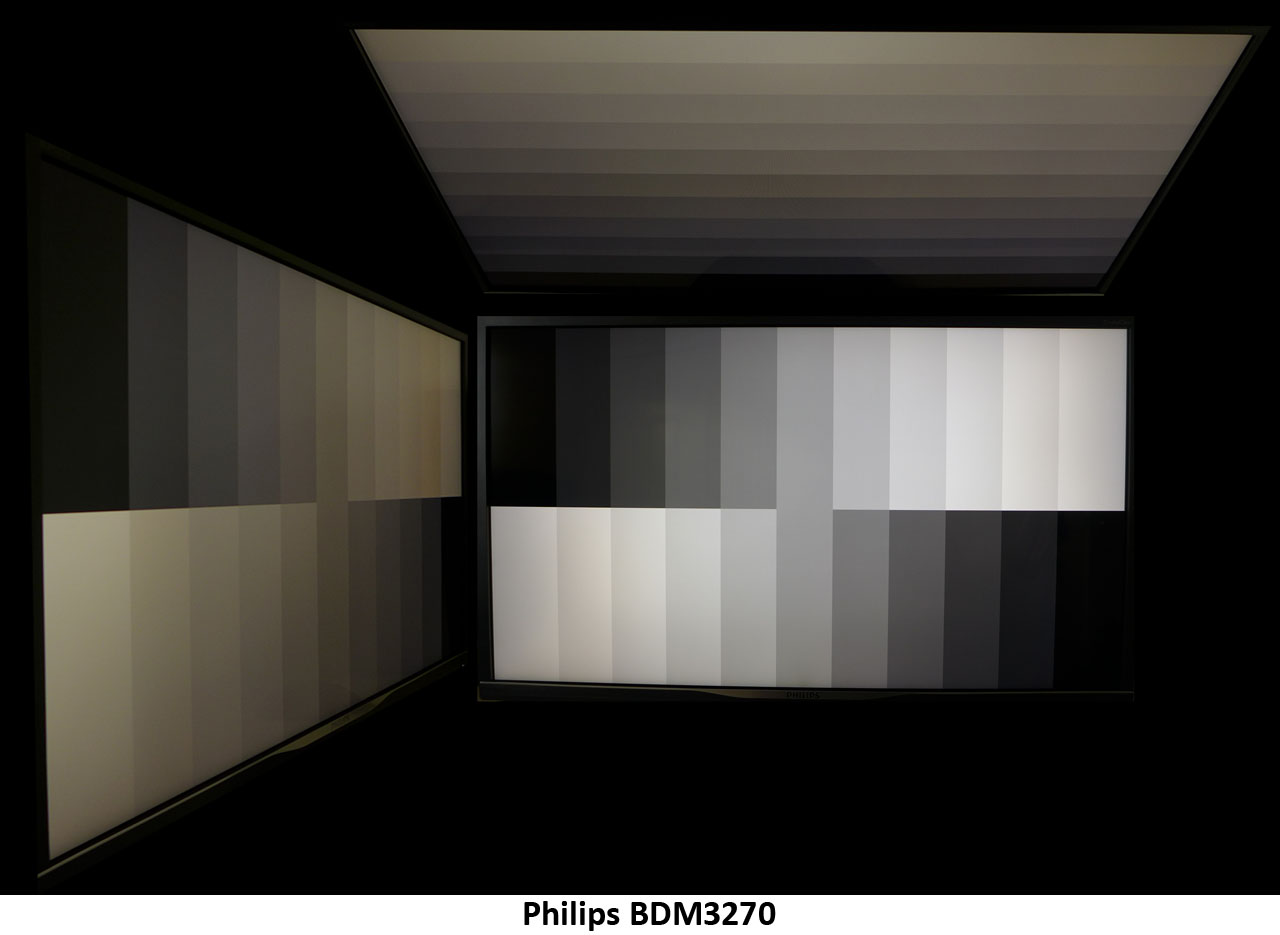Philips BDM3270 32-inch VA Monitor Review
Why you can trust Tom's Hardware
Viewing Angles, Uniformity, Response & Lag
Viewing Angles
Viewing angles are VA’s single weakness. If off-axis image quality is important to you, IPS is a better choice. It’s still superior to TN, but you can see our sample exhibits a significant loss of brightness and green color shift to the sides and looks much the same from above. Given the increase in contrast an image depth, we feel it’s a small price to pay.
Screen Uniformity
To learn how we measure screen uniformity, please click here.
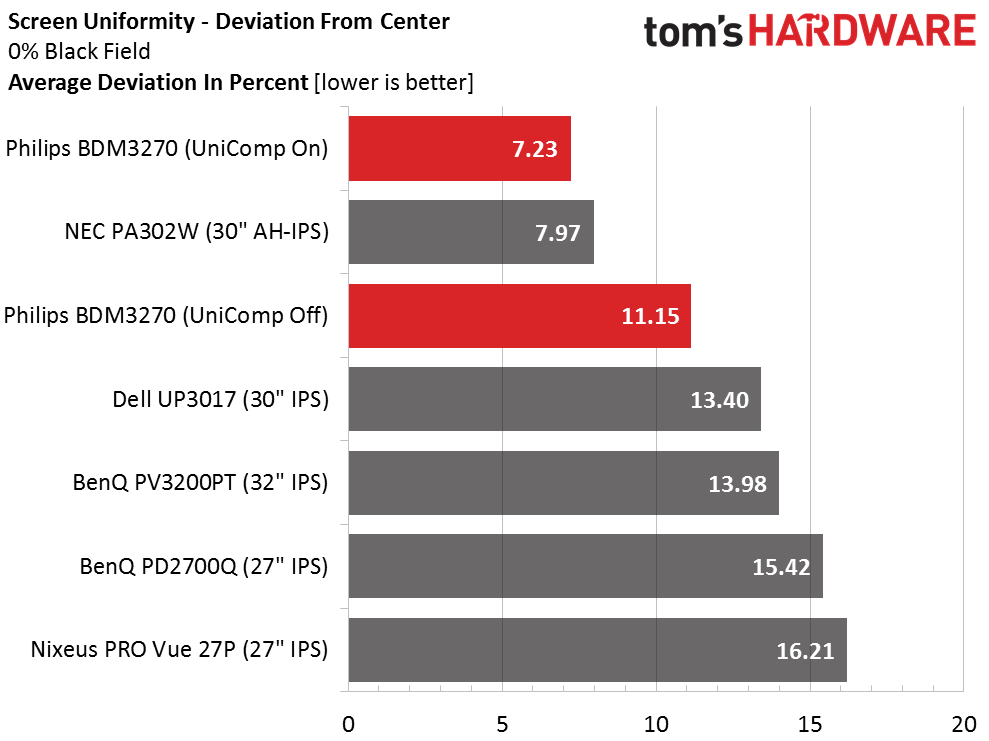
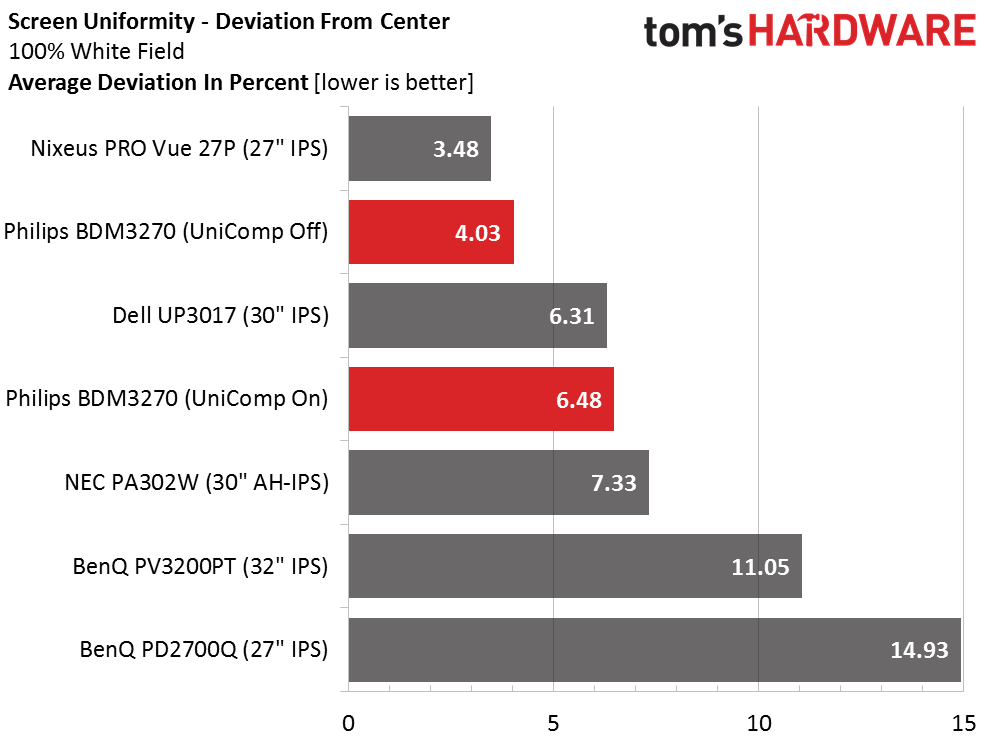
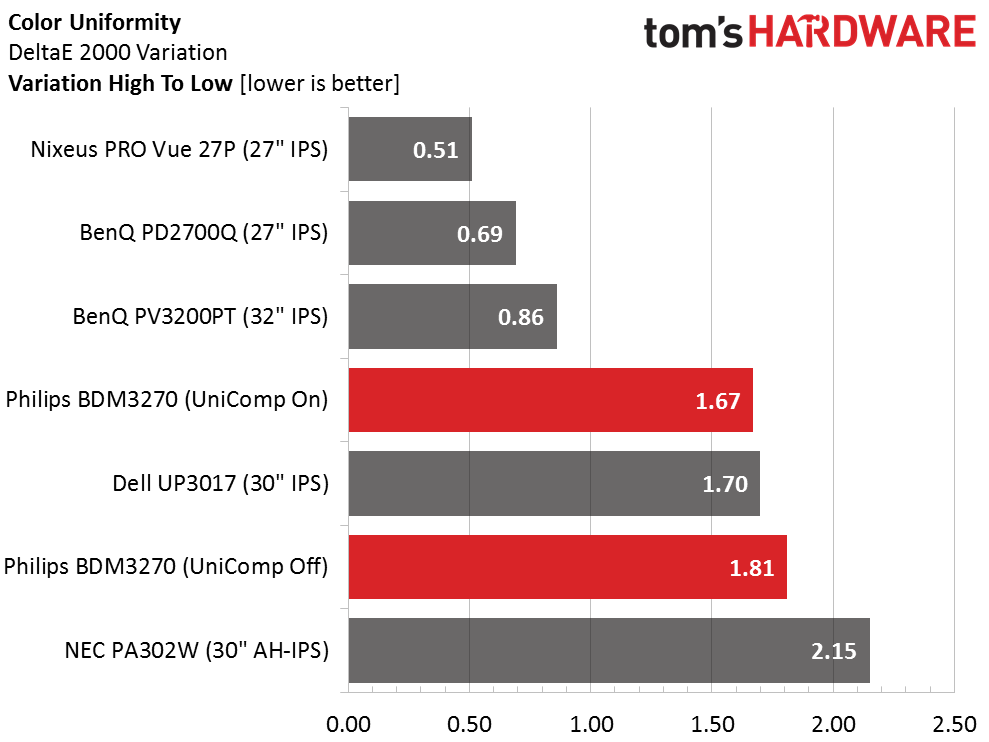
Clearly, SmartUniformity is effective in improving brightness consistency in both the black and white field tests. But it only takes the result from good to great. With such low black levels, you won’t see any hotspots or bleed in our BDM3270 sample even though the average deviation is over 10%. Your mileage may vary, but we suspect few of these monitors will suffer from unwanted artifacts. You can also see a slight improvement in the color uniformity numbers, but again the error wasn’t visible in the first place.
Pixel Response & Input Lag
Please click here to read up on our pixel response and input lag testing procedures.
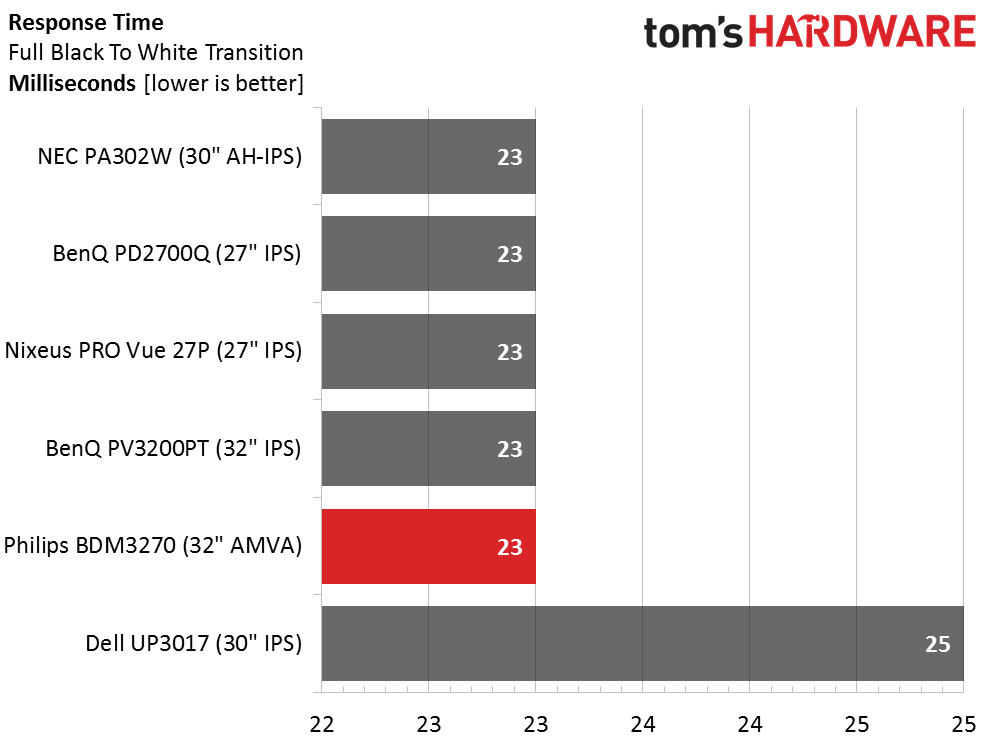
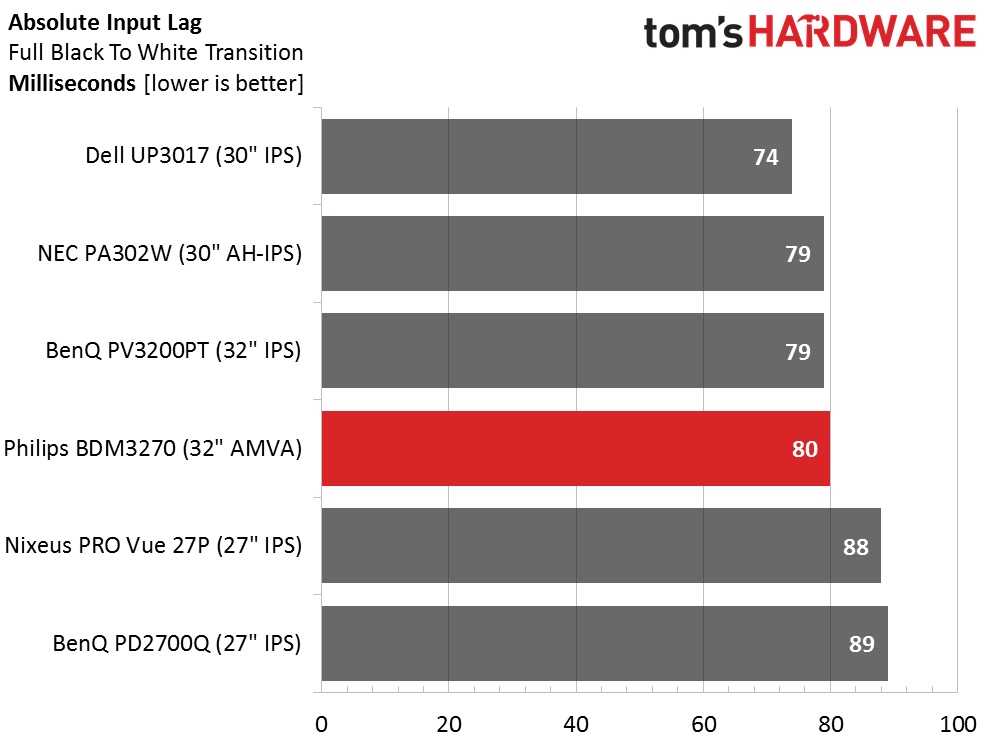
Clearly, the BDM3270 isn’t a gaming monitor, but its panel response is equal to that of any other 60Hz IPS display we’ve tested recently. Its input lag won’t amaze anyone, but it is right at the average level for the class. If you’ve become accustomed to fast refresh and adaptive-sync, the Philips might not satisfy. But for casual gamers, it suits just fine. Titles that don’t require hair-trigger control inputs will look amazing on that huge, high-contrast screen.
Get Tom's Hardware's best news and in-depth reviews, straight to your inbox.
Current page: Viewing Angles, Uniformity, Response & Lag
Prev Page Grayscale, Gamma & Color Next Page Conclusion
Christian Eberle is a Contributing Editor for Tom's Hardware US. He's a veteran reviewer of A/V equipment, specializing in monitors. Christian began his obsession with tech when he built his first PC in 1991, a 286 running DOS 3.0 at a blazing 12MHz. In 2006, he undertook training from the Imaging Science Foundation in video calibration and testing and thus started a passion for precise imaging that persists to this day. He is also a professional musician with a degree from the New England Conservatory as a classical bassoonist which he used to good effect as a performer with the West Point Army Band from 1987 to 2013. He enjoys watching movies and listening to high-end audio in his custom-built home theater and can be seen riding trails near his home on a race-ready ICE VTX recumbent trike. Christian enjoys the endless summer in Florida where he lives with his wife and Chihuahua and plays with orchestras around the state.
-
Terrific black levels and contrast ratios there! Those are main things that I hate about IPS panels. Wish it was 4K though, since I'd rather not downgrade in PPI from the 27" 1440 display I got half a decade ago.Reply
-
Nice to see VA panels getting some love. I've had a 32" Samsung S32D850T for about 2 years now. It uses the same panel as the BenQ BL3200PT mentioned on the first page. I wouldn't trade the picture quality for anything and I use it primarily for gaming.Reply
-
sillynilly Nice review and panel - confused though you say it is selling for less than $700, but the link shows $379 (which is amazing if it is the same monitor). At that price point it is a great monitor for everyday use and I may be buying one to replace my old 1440 IPS used for daily tasks.Reply
EDIT: It is the same, but just not available for at least 1-2 months, which I read to mean as never. Maybe being phased out? -
theusual Their manual says it can handle up to 76 hz vertical refresh rate. Have you attempted this?Reply -
theusual Oops. I see that is at 1440x900. Only 60Hz at full resolution. I wouldn't want you to damage your monitor attempting it.Reply -
mapesdhs It's a shame you've not reviewed the Philips BDM3275UP, an UHD model using similar technology.Reply
Re the page about the OSD, one thing is missing: are the menus decently readable? I've read compaints about this concerning Philips monitors on seller sites. Also, re the model I cite above, several owners report annoying vertical banding issues which required model replacement; did you see any sign of this with the 3270?
Ian.
PS. Please do something about these stupid popup videos, they are really annoying. They block the navigation menus and are visually very irritating. Whoever thought they were a good idea, they're wrong. -
uglyduckling81 Reply19385794 said:PS. Please do something about these stupid popup videos, they are really annoying. They block the navigation menus and are visually very irritating. Whoever thought they were a good idea, they're wrong.
Add NoScript to your Firefox browser. Allow tomshardware.com, ajax.googleapis.com, and best of media.com
Add on Ublock Origin.
You won't see videos or ads. Makes for a great browsing experience. Of course you have to set up which scripts to allow for each site you go to. WCCFTech for instance has about 30 scripts of which I allow 1 maybe 2 to get the full experience but still block all the spying and data wasting downloads.
I'm on very limited download quota this year so every byte counts. Plus it speeds up my web page loading. -
hixbot I'm still waiting for a QHD/4k PVA 120hz+ panel with strobing and Gsync/freesync that isn't curved!Reply
I can't stand the contrast ratios of IPS, and I'm not interested in all these curved PVA gaming panels. I want a flat PVA gaming panel that is atleast QHD.
